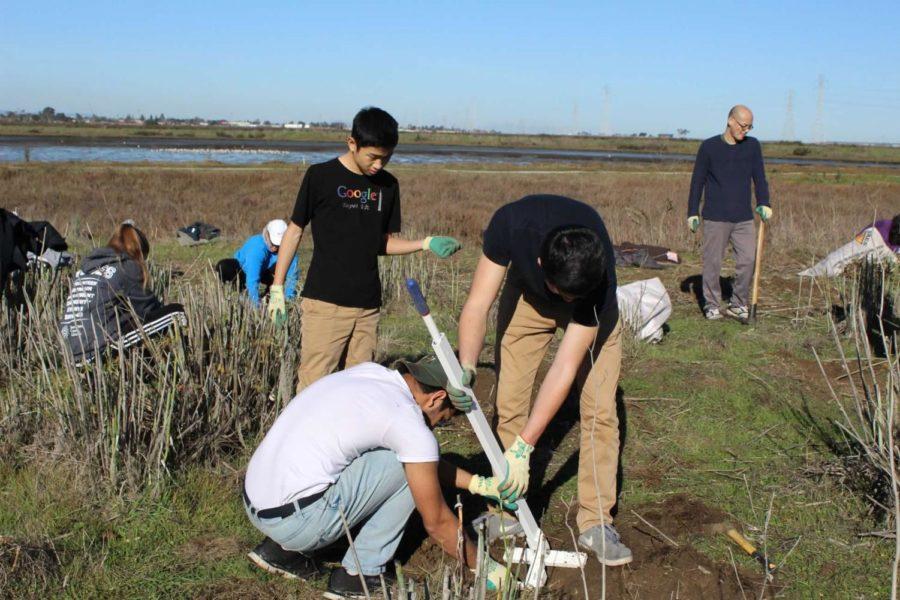Every year, more than a million migratory birds take refuge in the Palo Alto Baylands. For 2018, Save the Bay intended to welcome these travelers by removing invasive plant species and replacing them with native ones.
“We’re here to make these estuaries better for the birds and other species that live here,” said Save the Bay restoration operations specialist Kenneth Ransel. “For the birds, we would like to make their stay more hospitable, and for the fish, we want to keep the bay clean from trash and chemicals.”
To do this, Save the Bay called for the local community to offer its support. On Jan. 20, with a force of 75 volunteers, the organization targeted a large fennel patch within the Palo Alto Lagoon area for restoration.
Half of the volunteers were assigned with the removal of the invasive fennel species from the area. Armed with handpicks, shovels, and a weed wrench, groups of all ages bent onto their knees and hammered away at the roots of the fennel plants. To prevent the invasive species from spreading further, the volunteers had to dig into the dirt to find the fennel roots and remove all traces of them. Three hours after the event started at 9 a.m., almost all of the fennel had been hand removed by the volunteers.
“It was interesting to work together for the restoration,” said freshman Sarga Nair, who came to the event with her community service group, V.O.I.C.E.S. “We felt very accomplished because we removed a lot of fennel.”
On the other hand, the other half of the group worked on returning native plant species into the area. In pre-dug holes, this section of the volunteers distributed seeds into little mounds which they covered with wood chips and watered. Once the plant species matured in the future, they would help to cleanse the environment of the Palo Alto Baylands and give resting places to traveling birds.
At the event, Mitchell Oster, a regional political organizer for Save the Bay, directed the attention of the community to lend their support to legislative efforts that would preserve estuaries like the Palo Alto Lagoon. Oster specifically wanted people to pay attention to a park bond that would appear in the June 2018 primaries and a water bond that would appear in the statewide November election.
“Over the next few months, Save the Bay will work with partners over at the state legislature to get funding for projects like this,” said Oster. “Save the Bay is looking to restore 100,000 acres of marshland. We currently have only 40,000 acres of that restored.”
In total, Save the Bay hopes to conduct many more restoration projects akin to what happened at the Palo Alto Baylands. Through the use of community support in both funding and volunteers, the organization hopes to create more events that benefit the wildlife and environment.
“It makes you tired, but it feels really refreshing to give back to the community through these types of events,” said Felix Chen, a senior who volunteered in the fennel patch. “It’s really important to help the estuaries because so many birds and fish live in it.”


